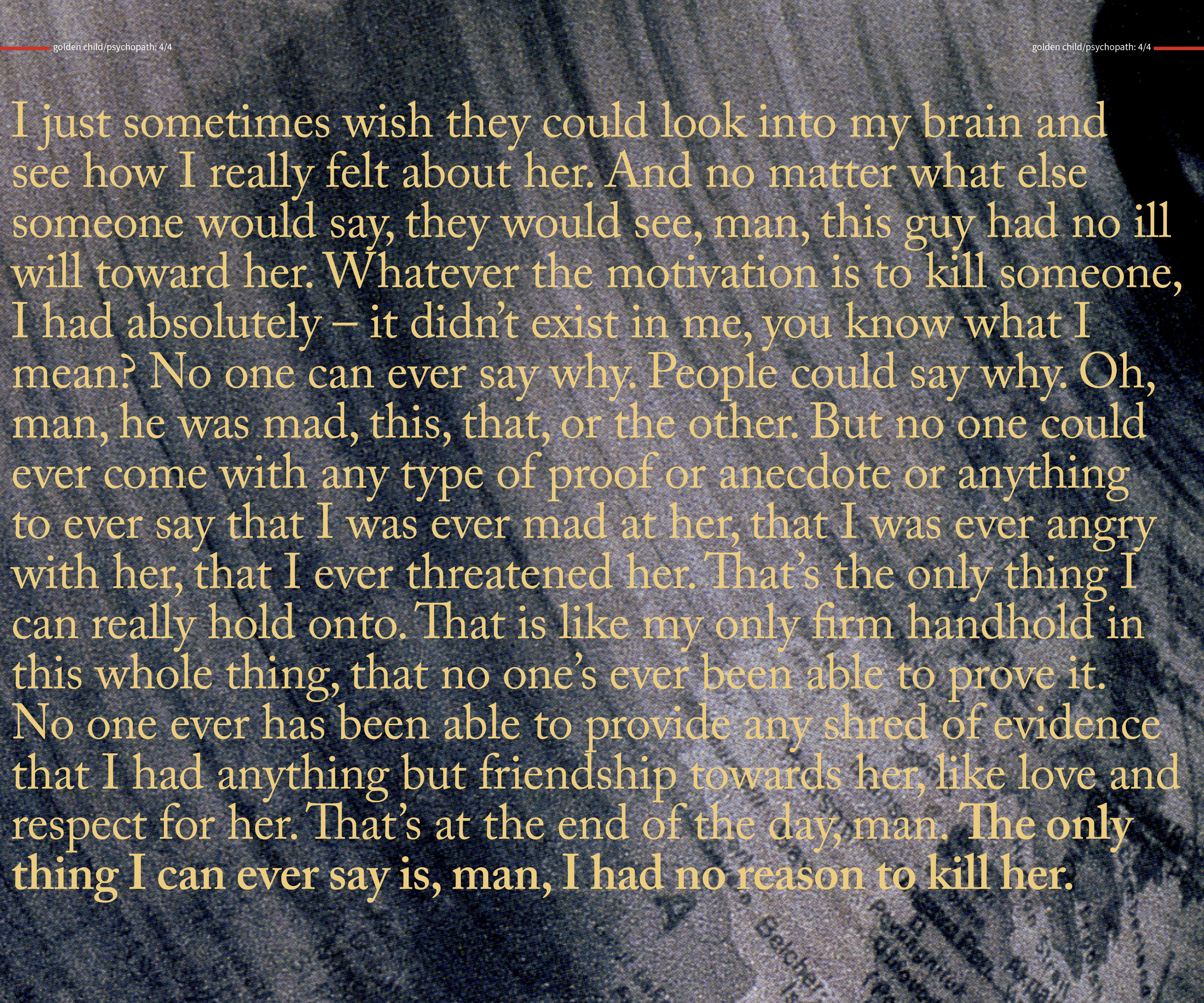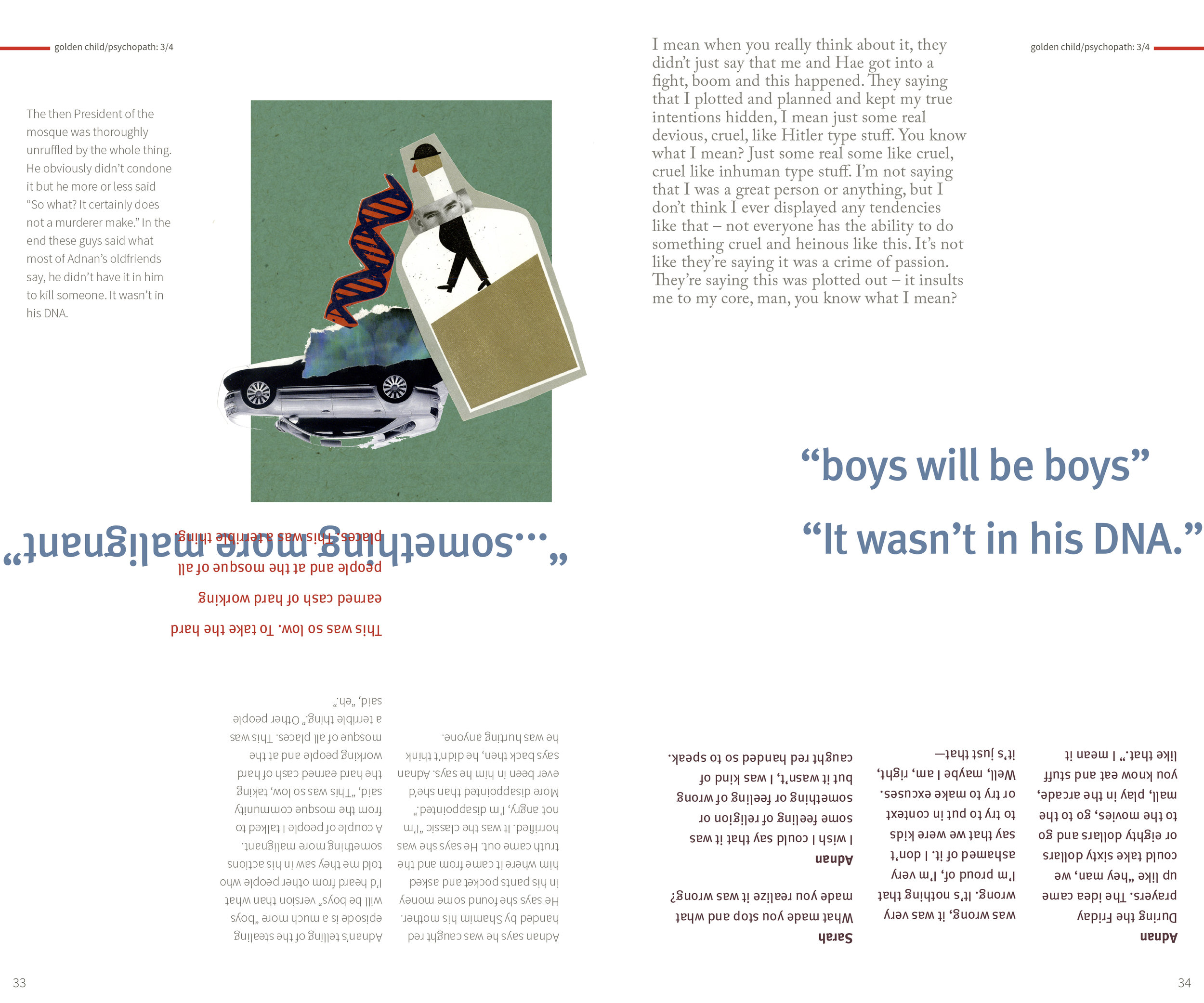Flip Flop
book print design visual design | Fall 2015
An interpretation of the podcast, Serial, through a visual narrative. I designed a book centered around the subjectiveness of our biases, how the same information can lead to wildly opposite conclusions when perceived and interpreted differently.
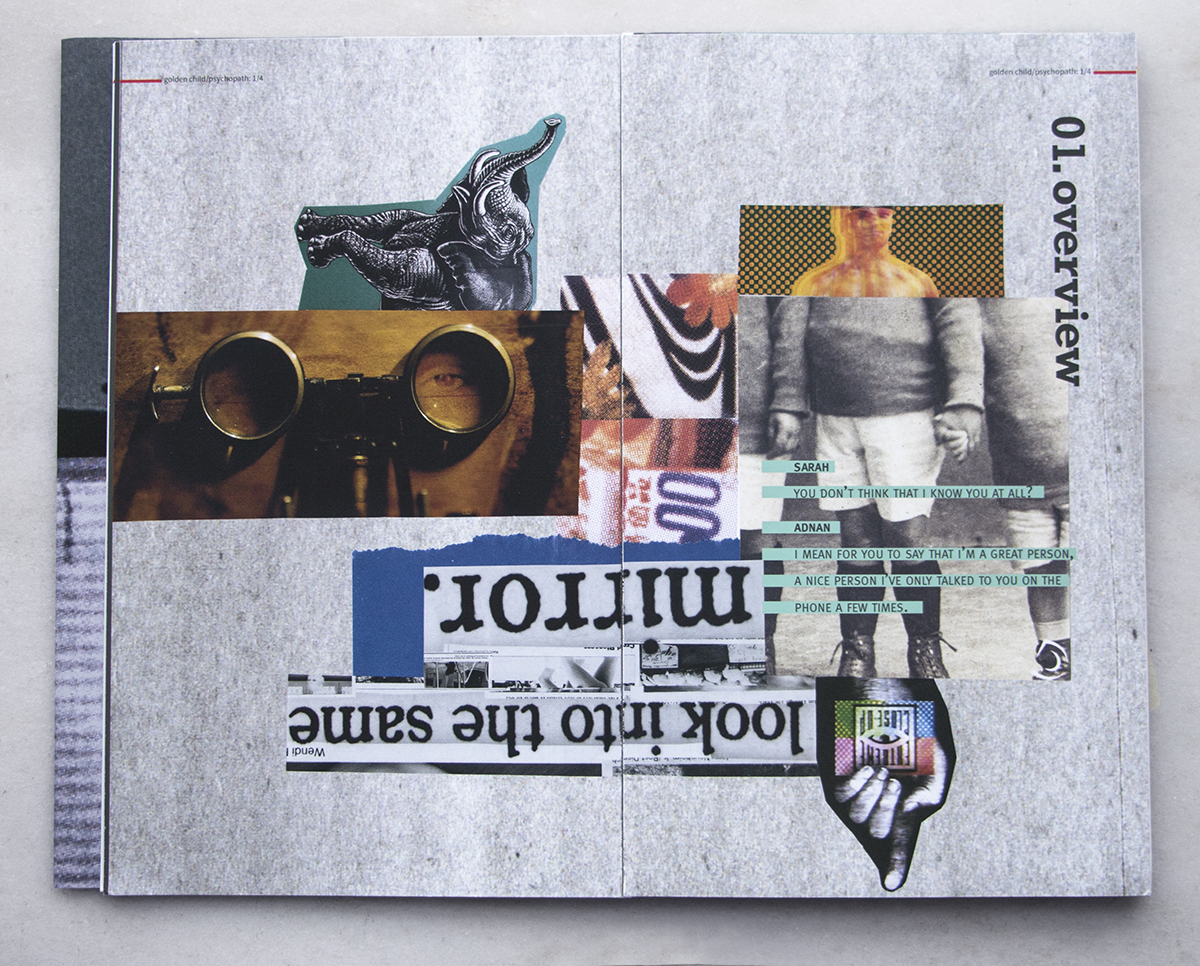
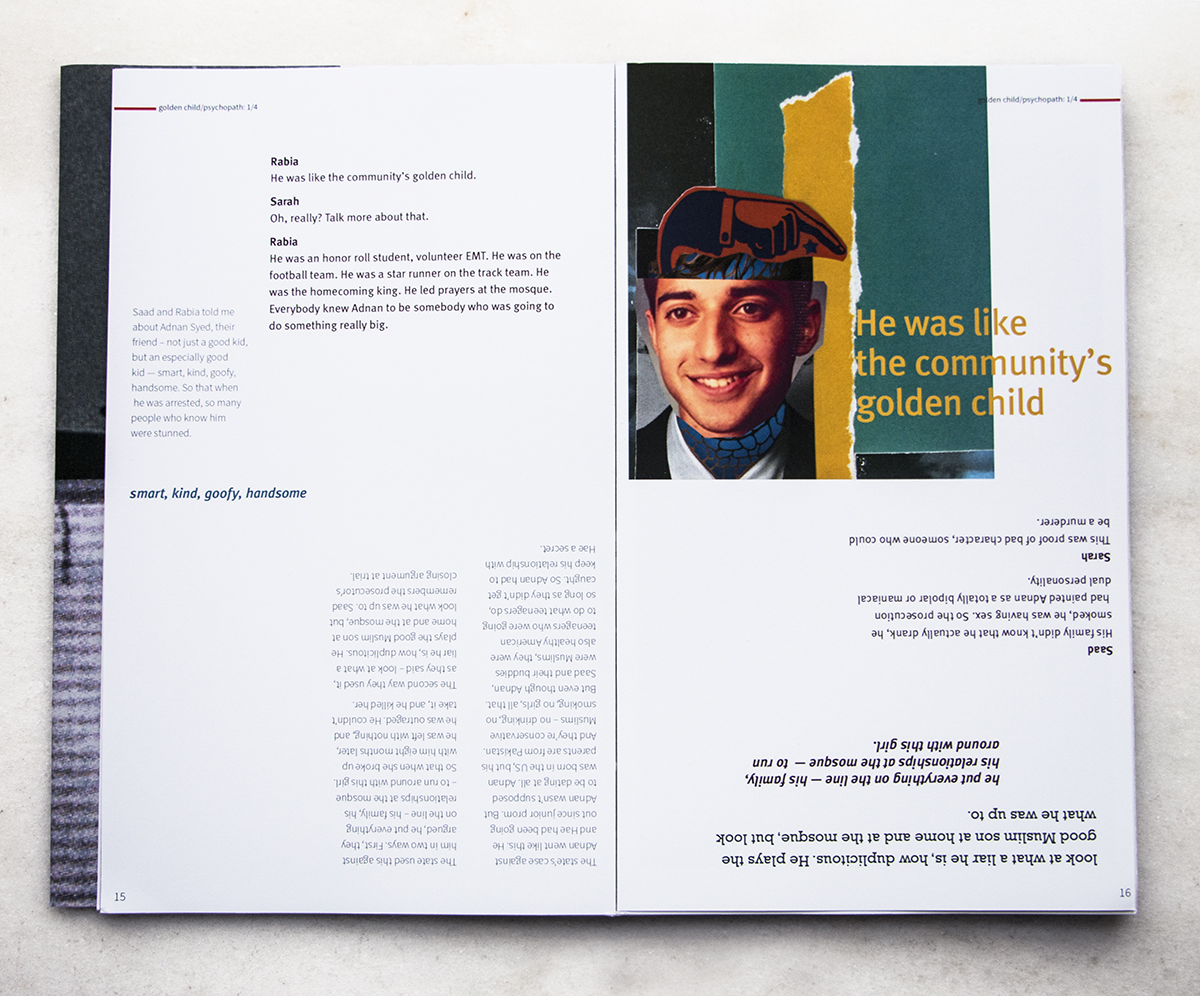
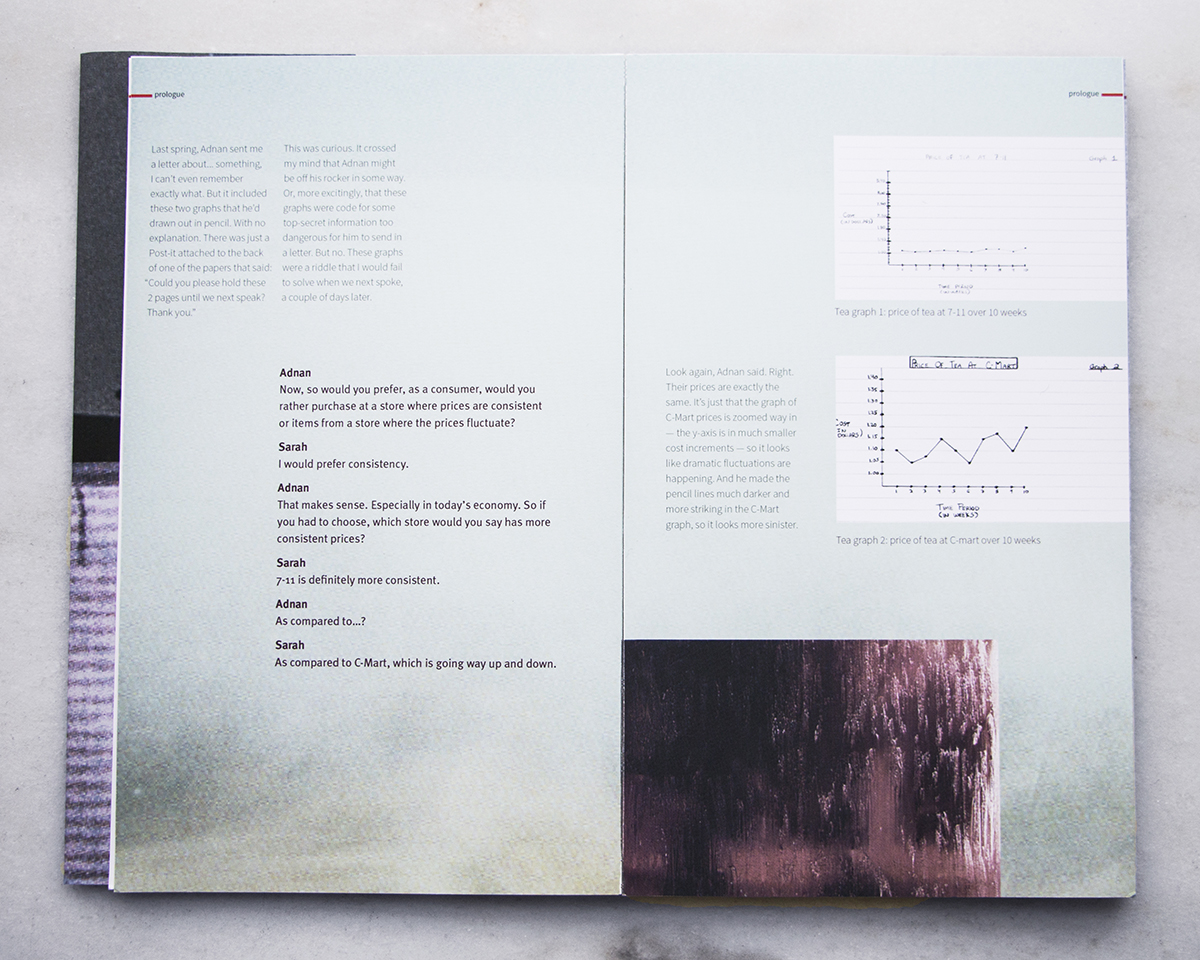



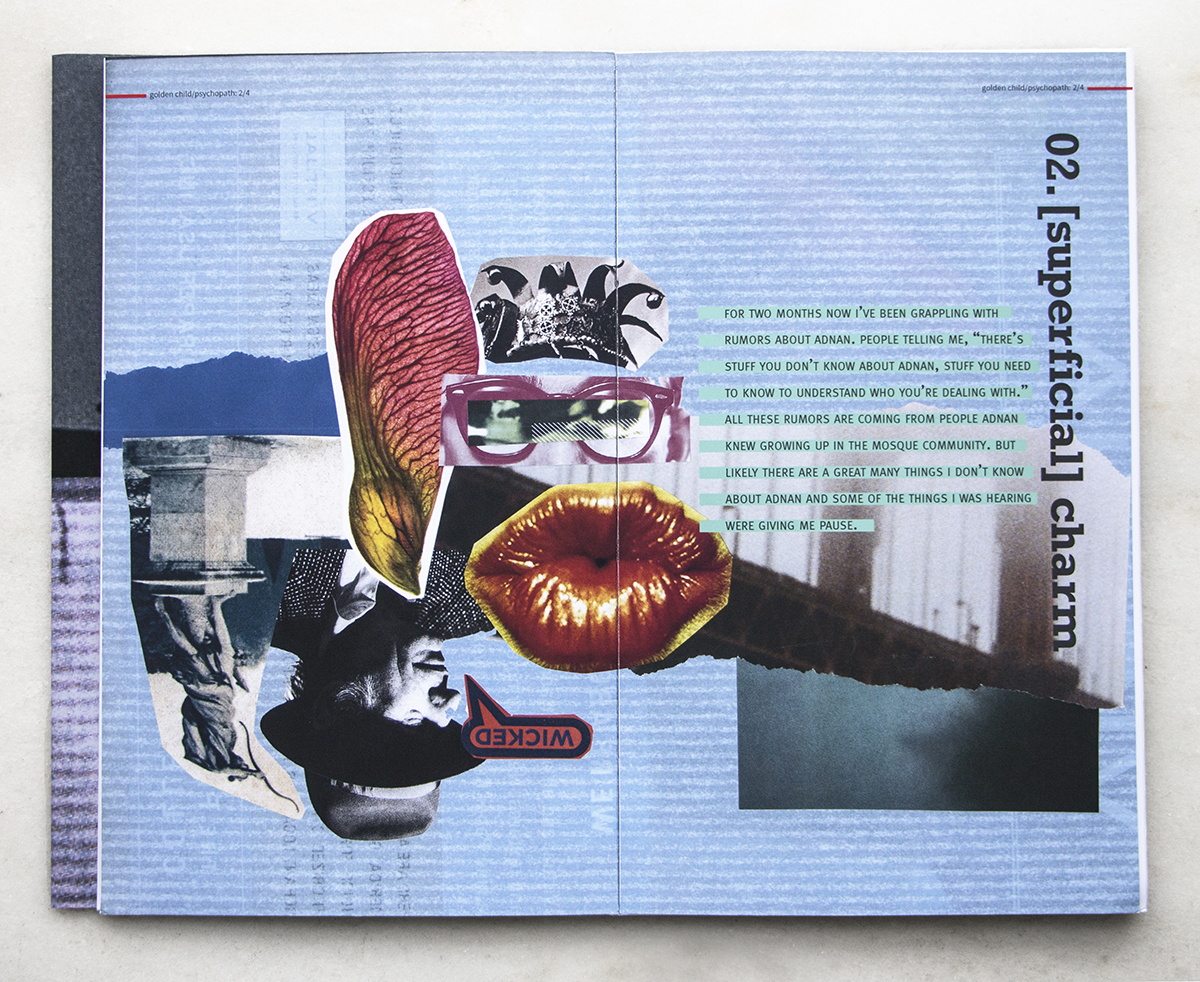
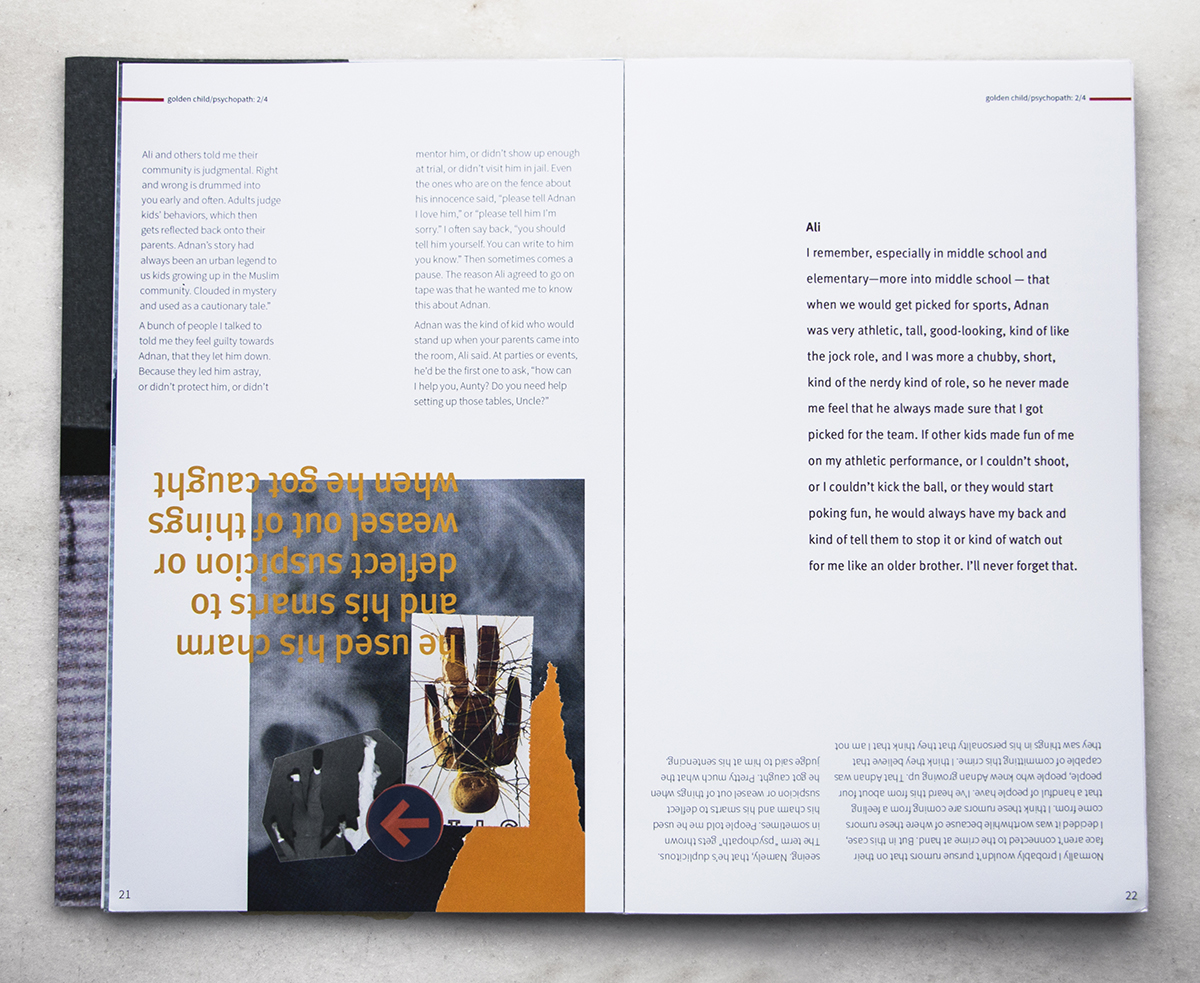
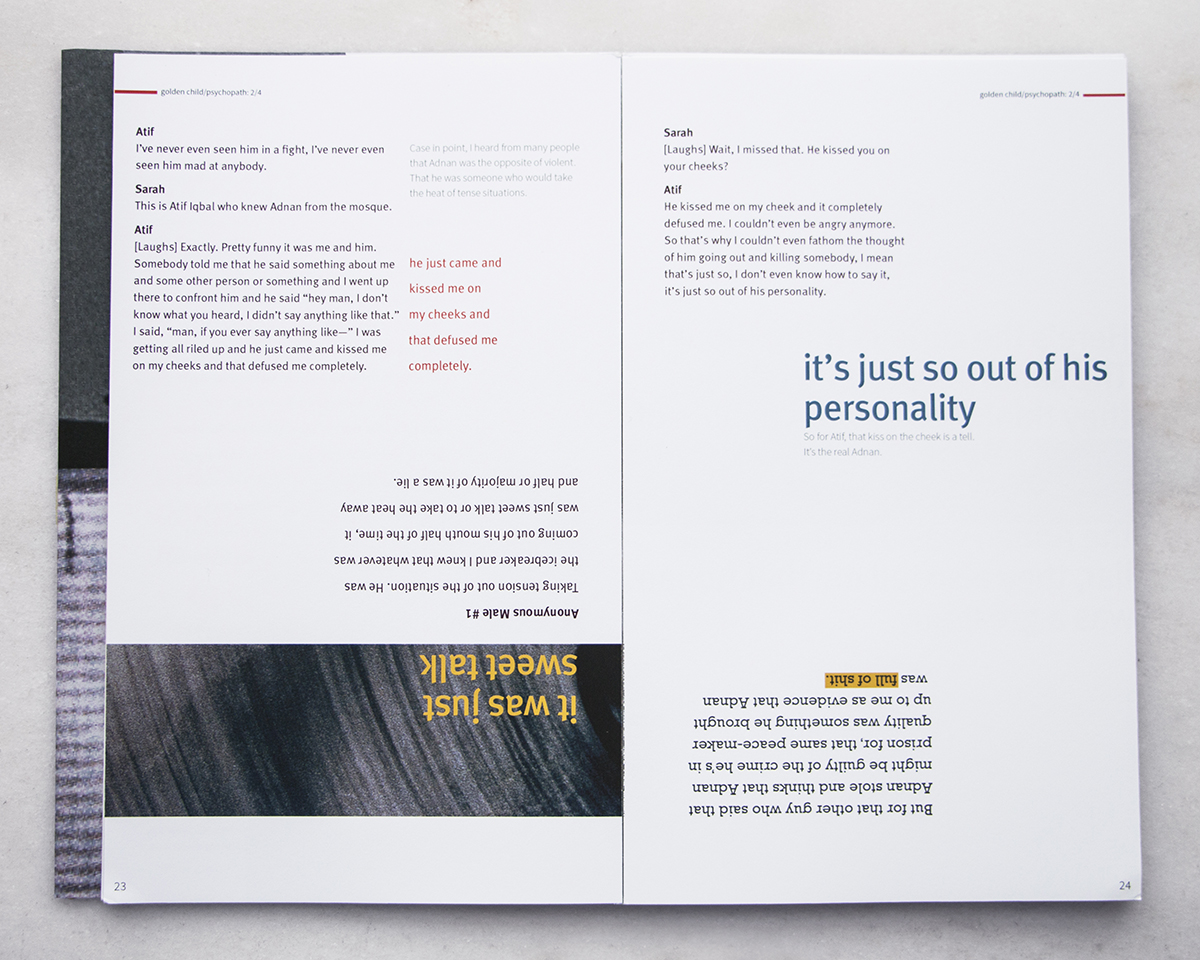
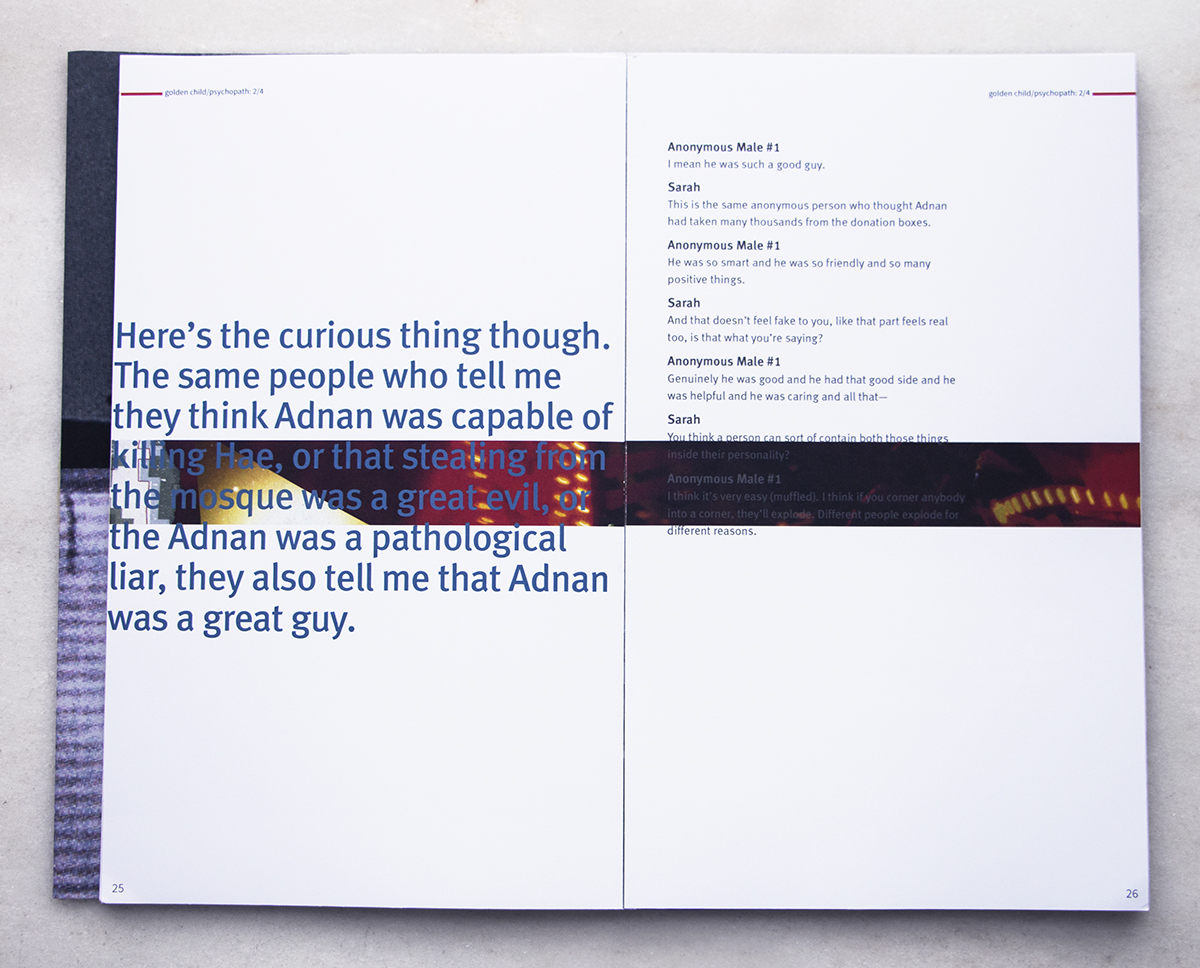
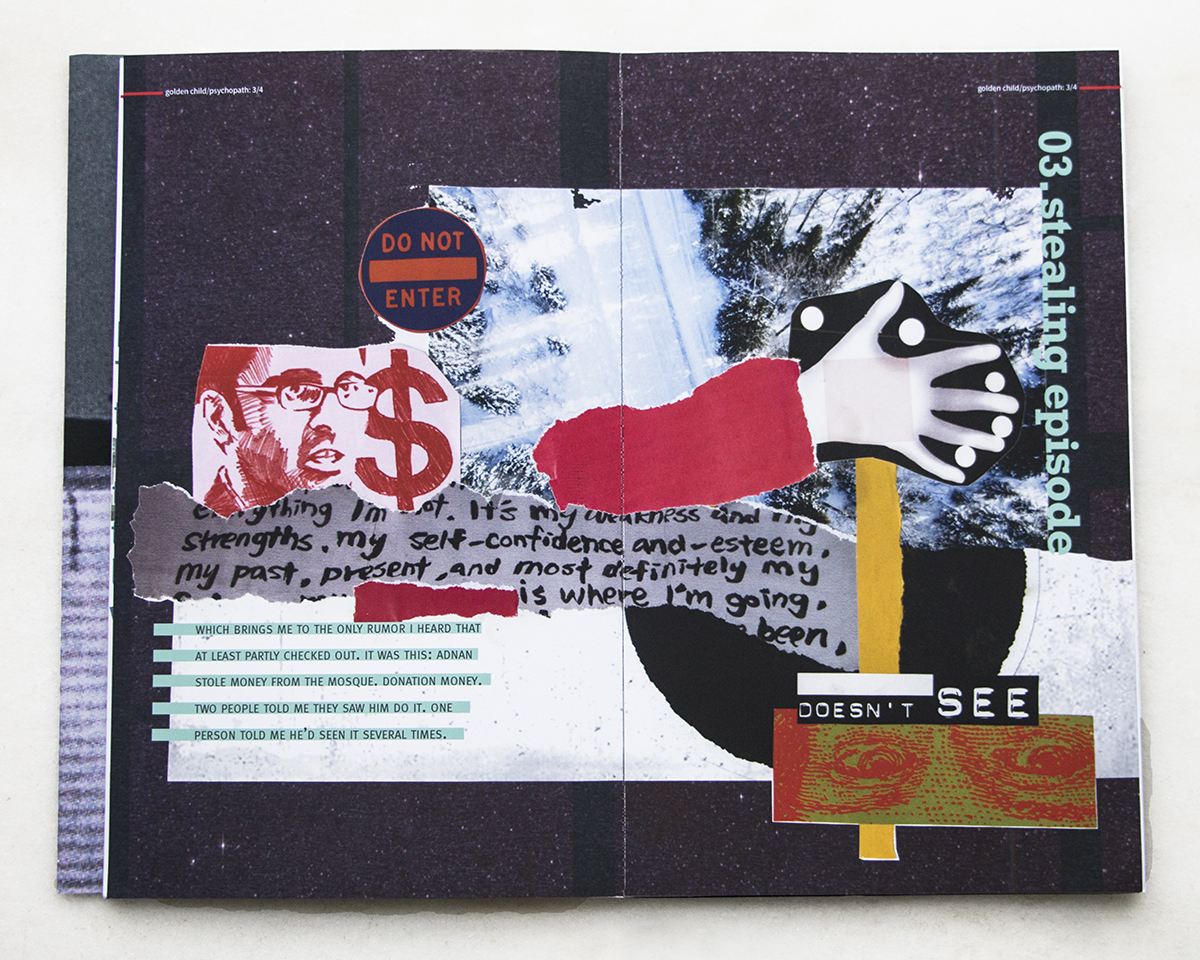
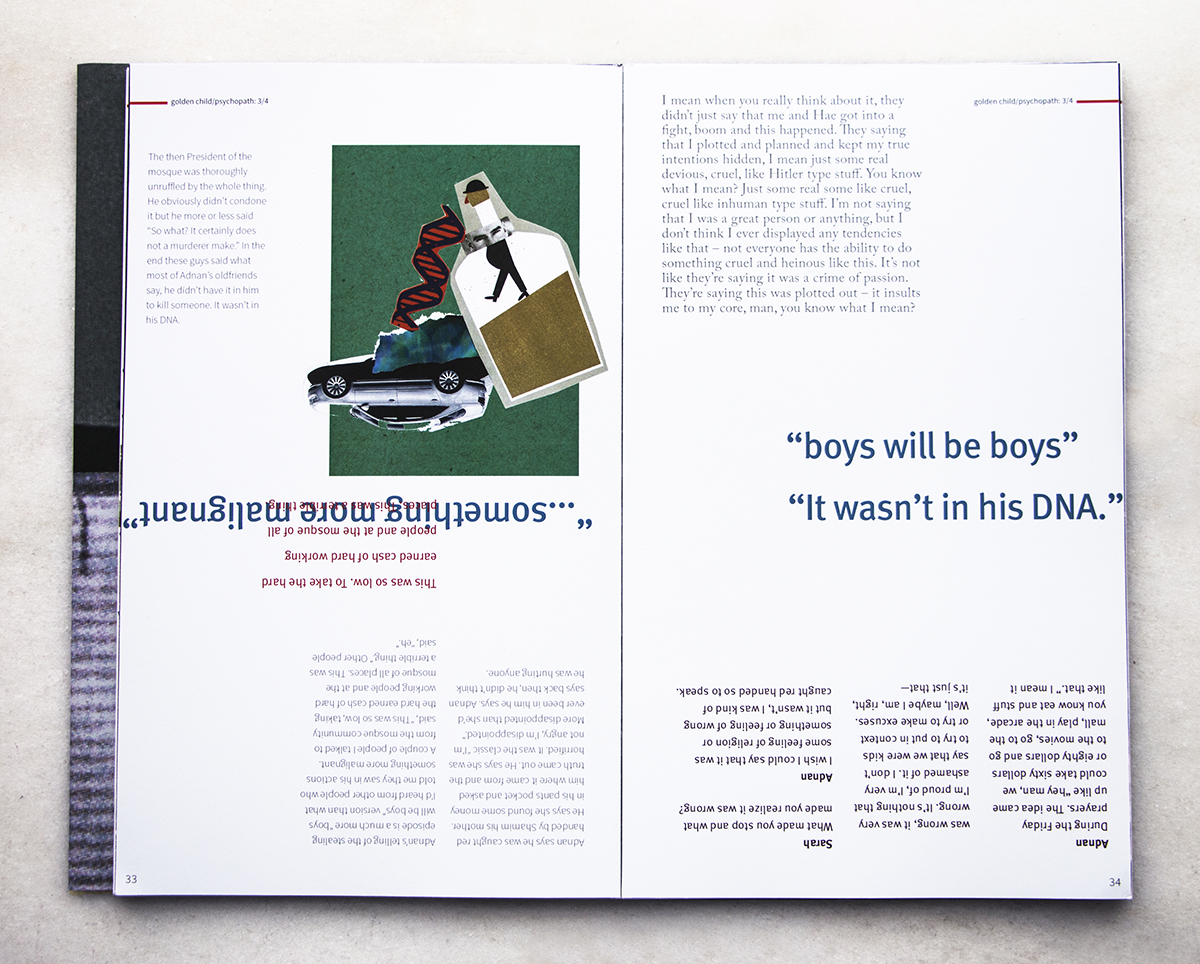
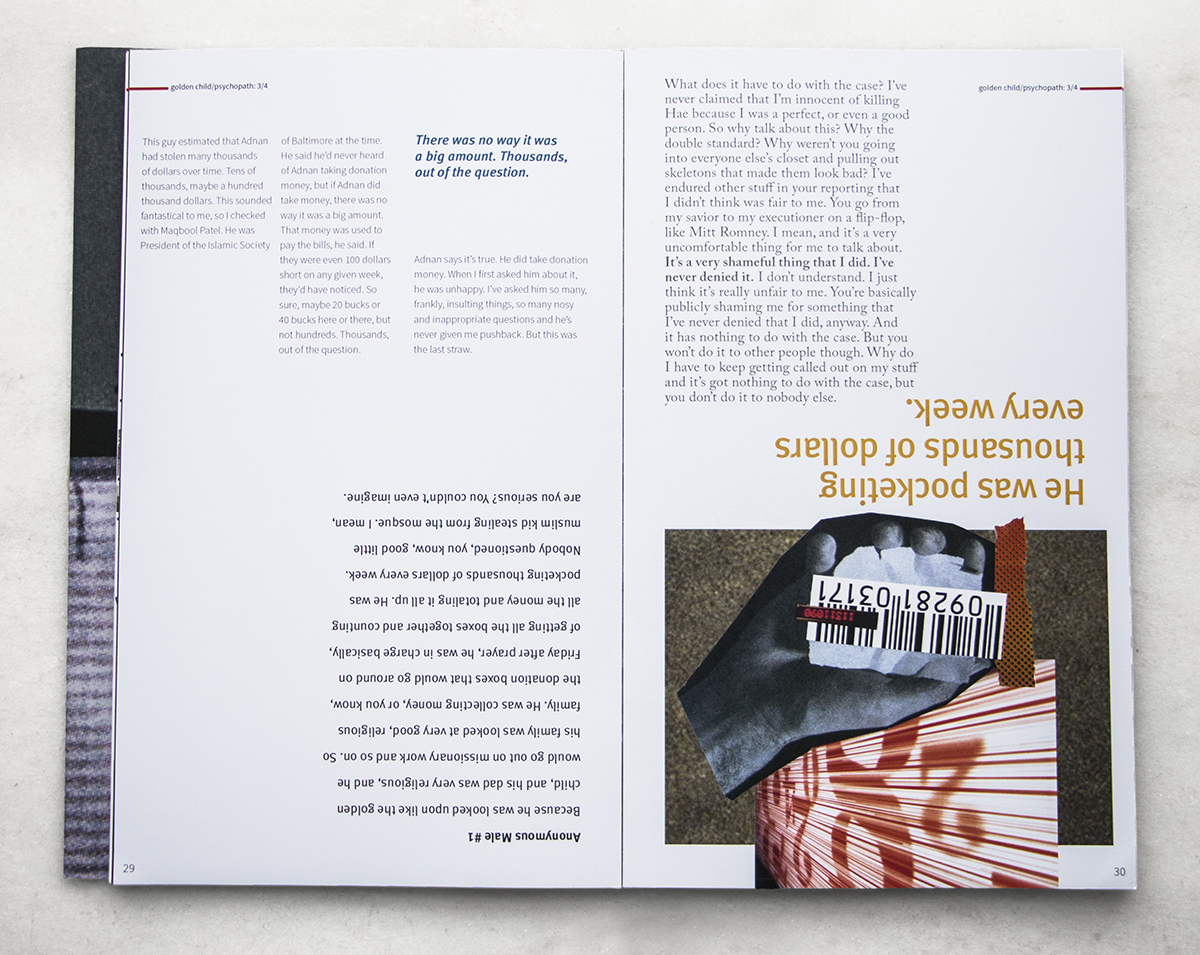
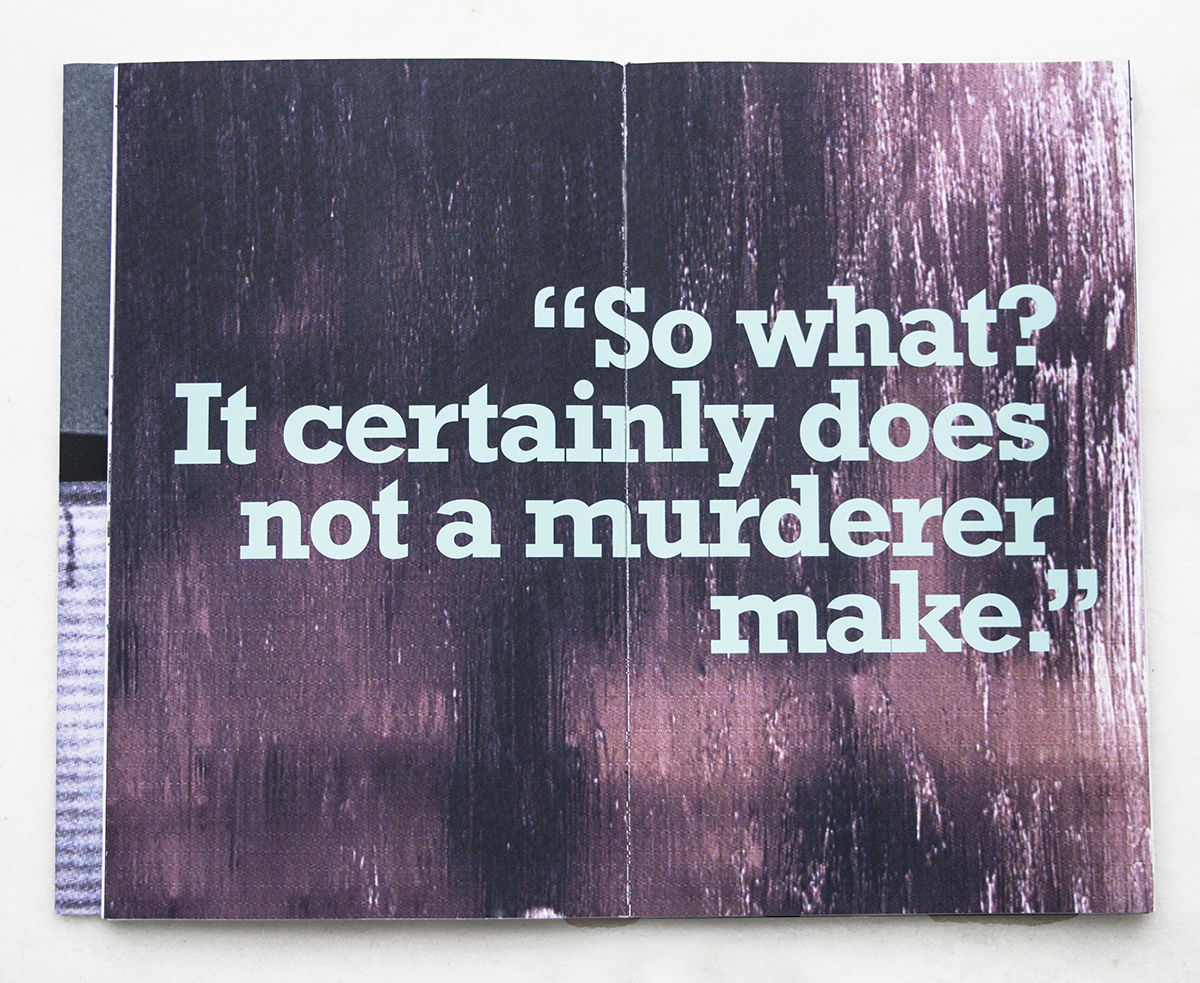
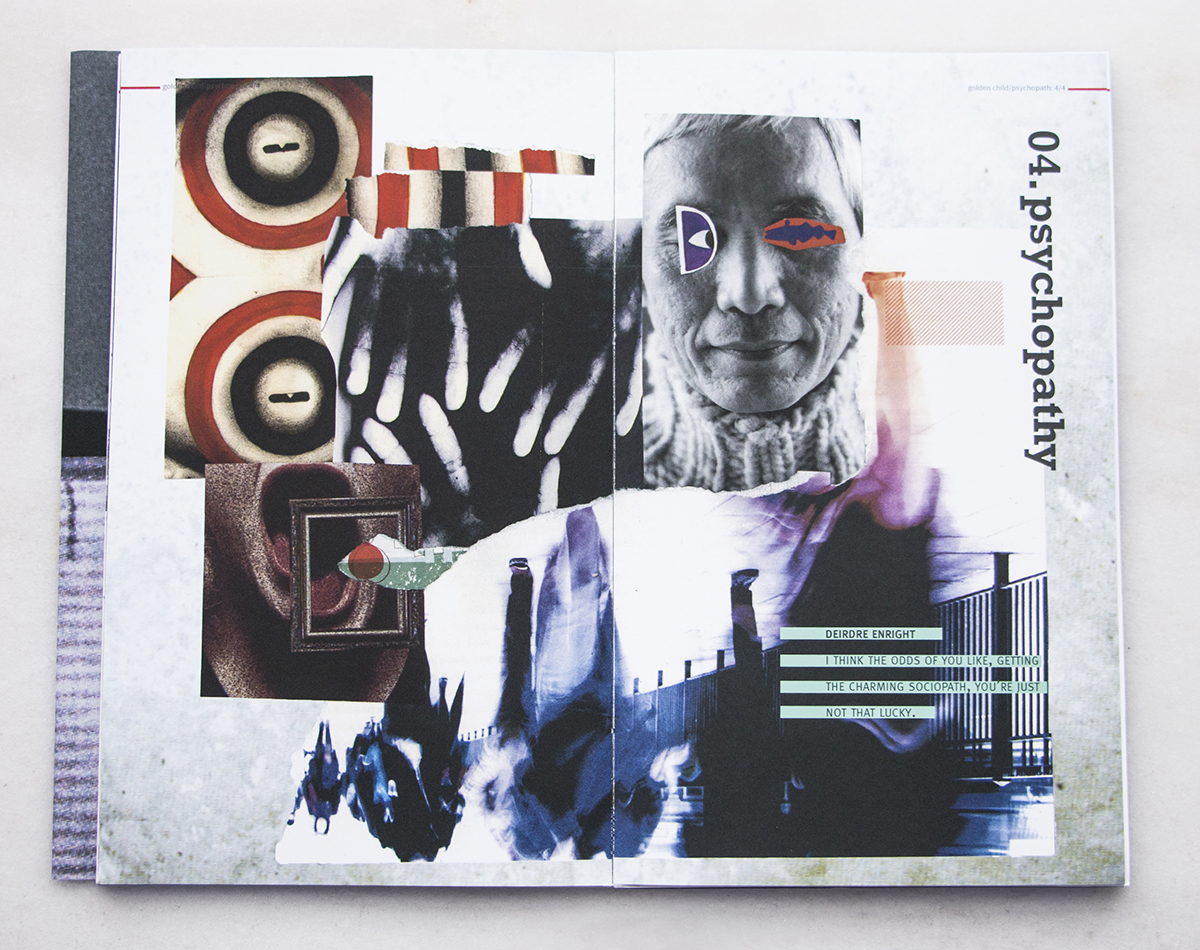
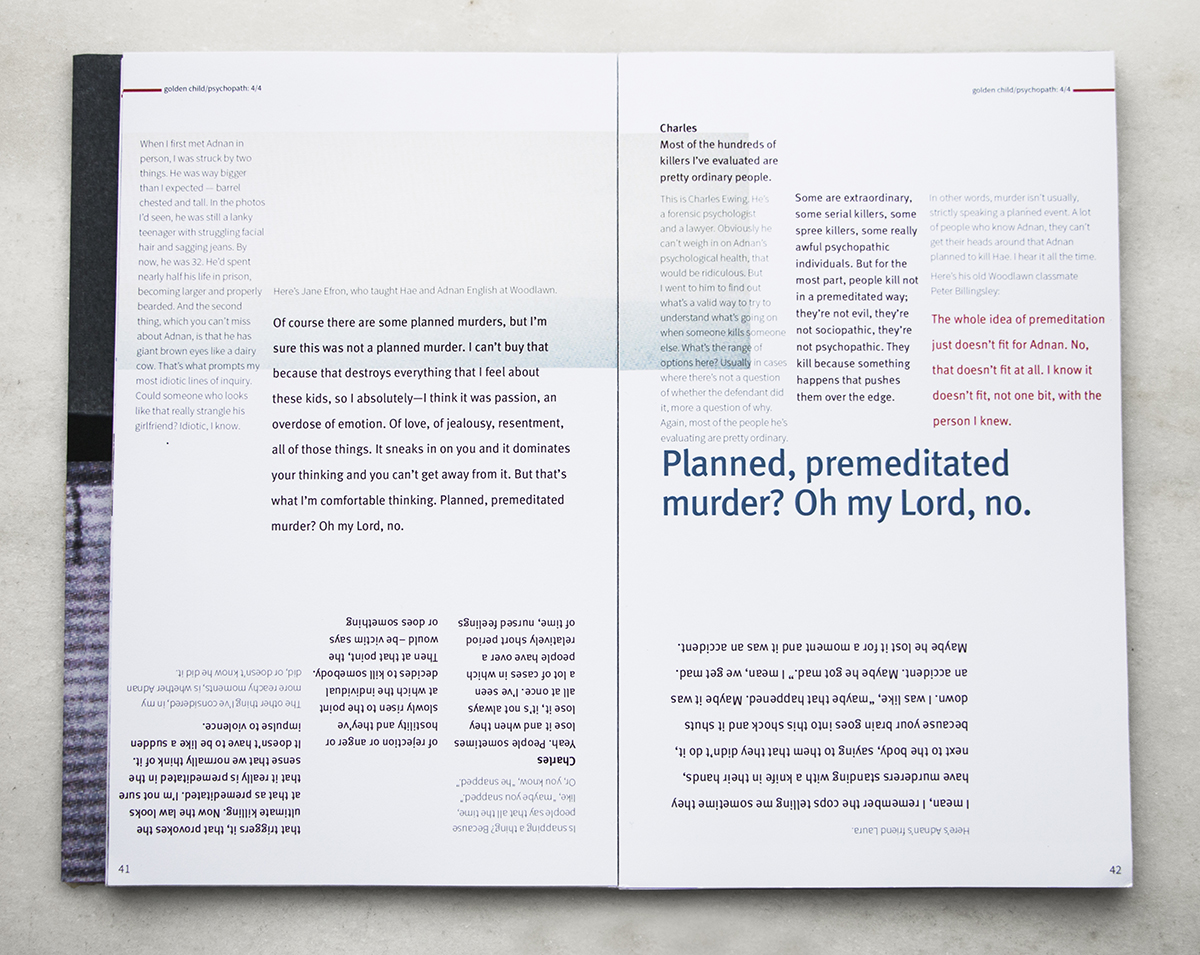
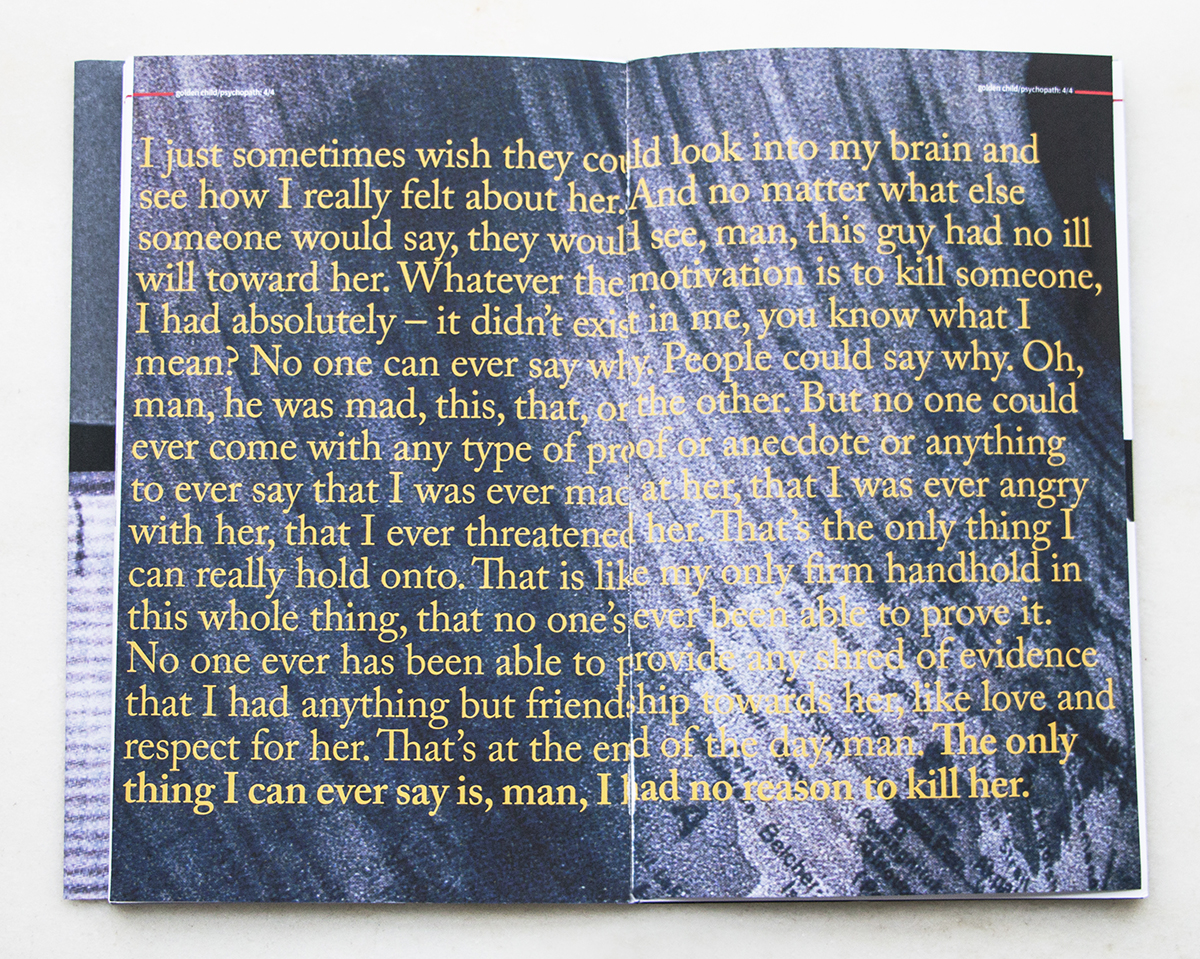
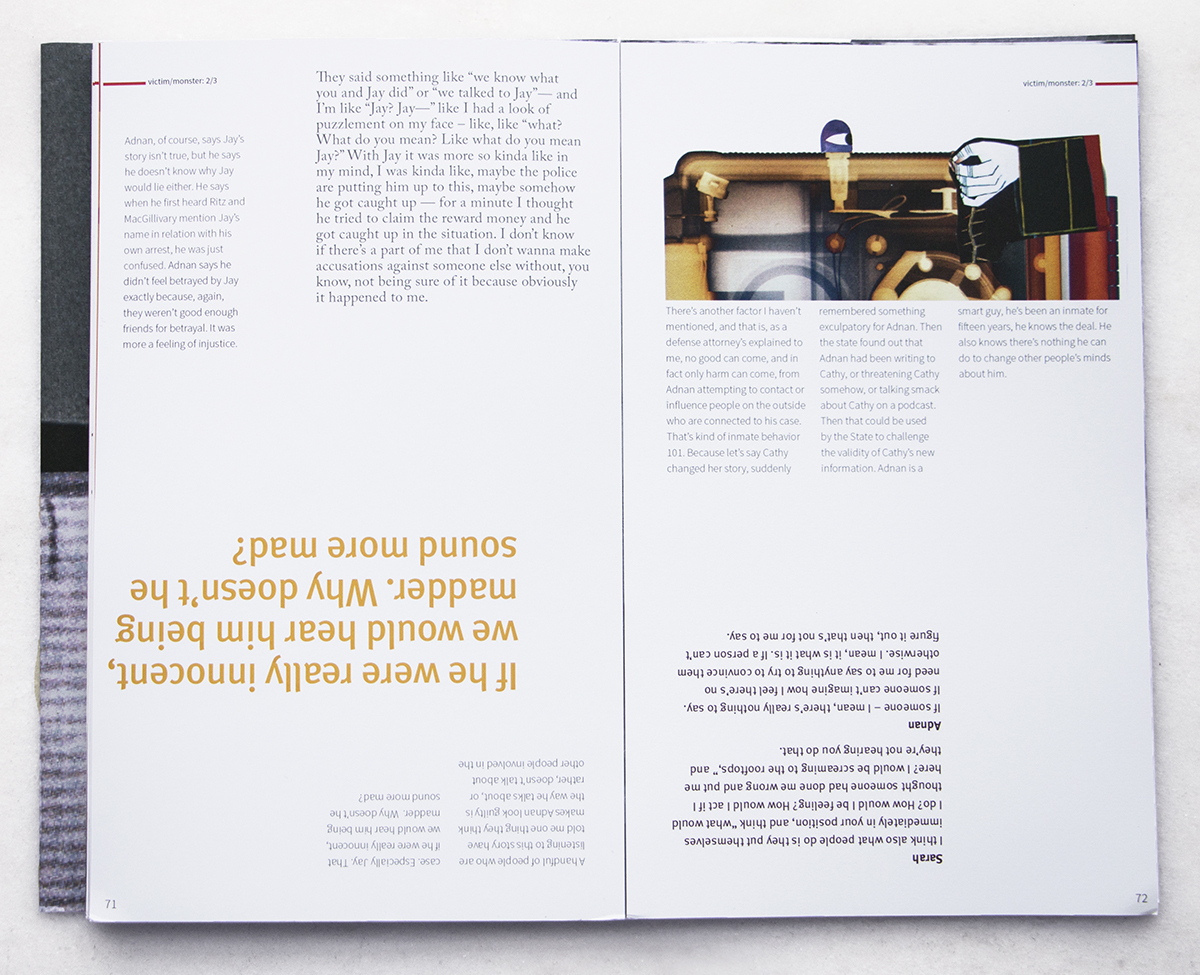
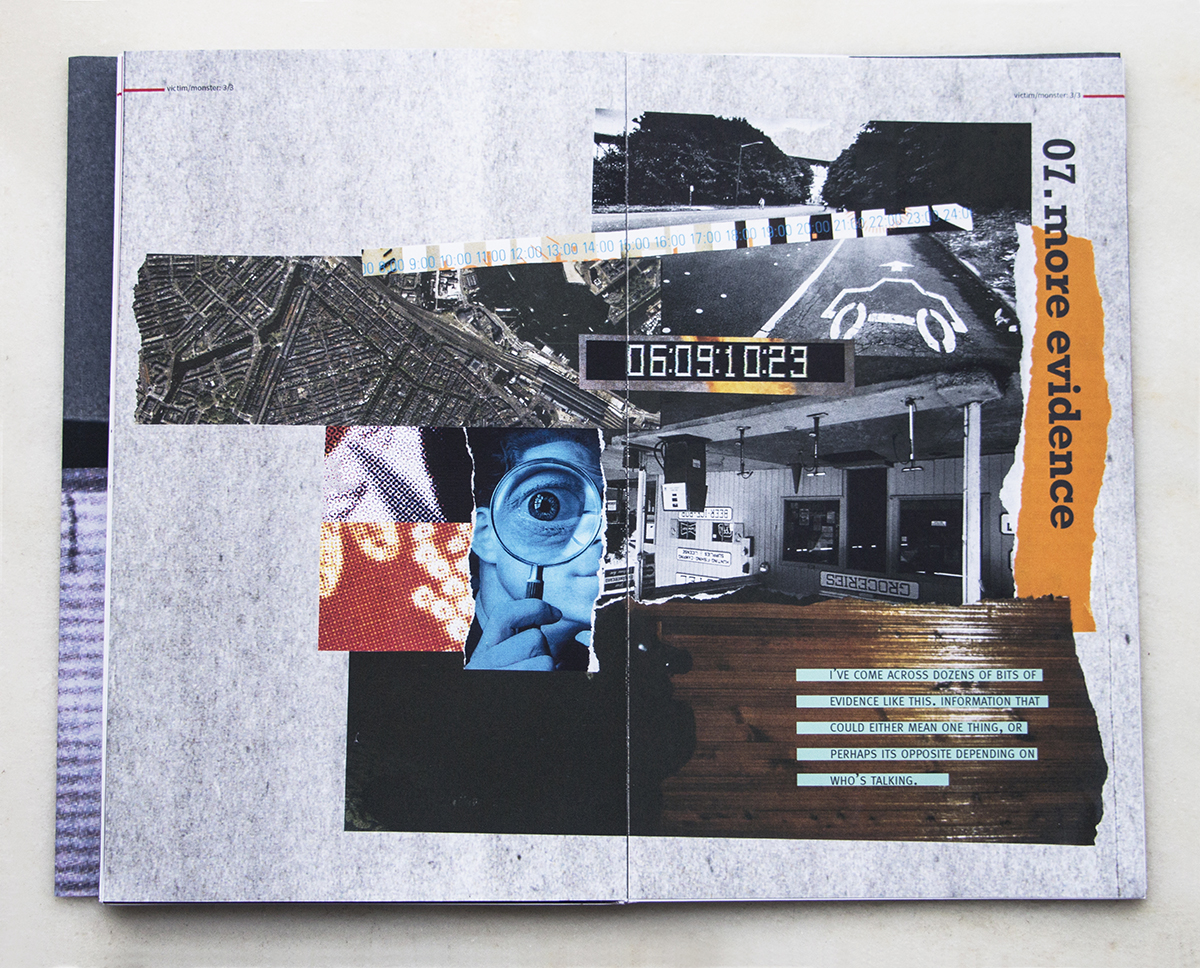
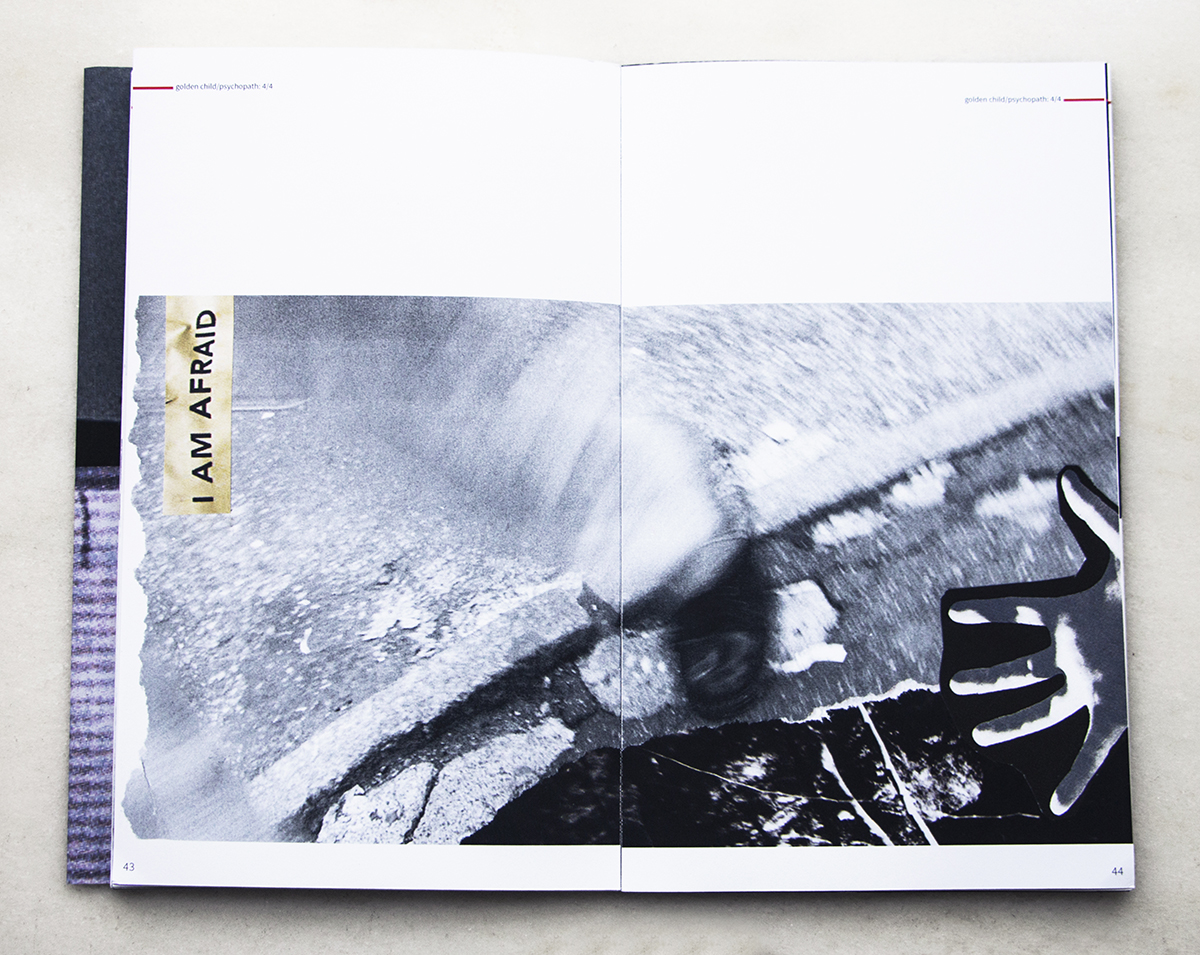
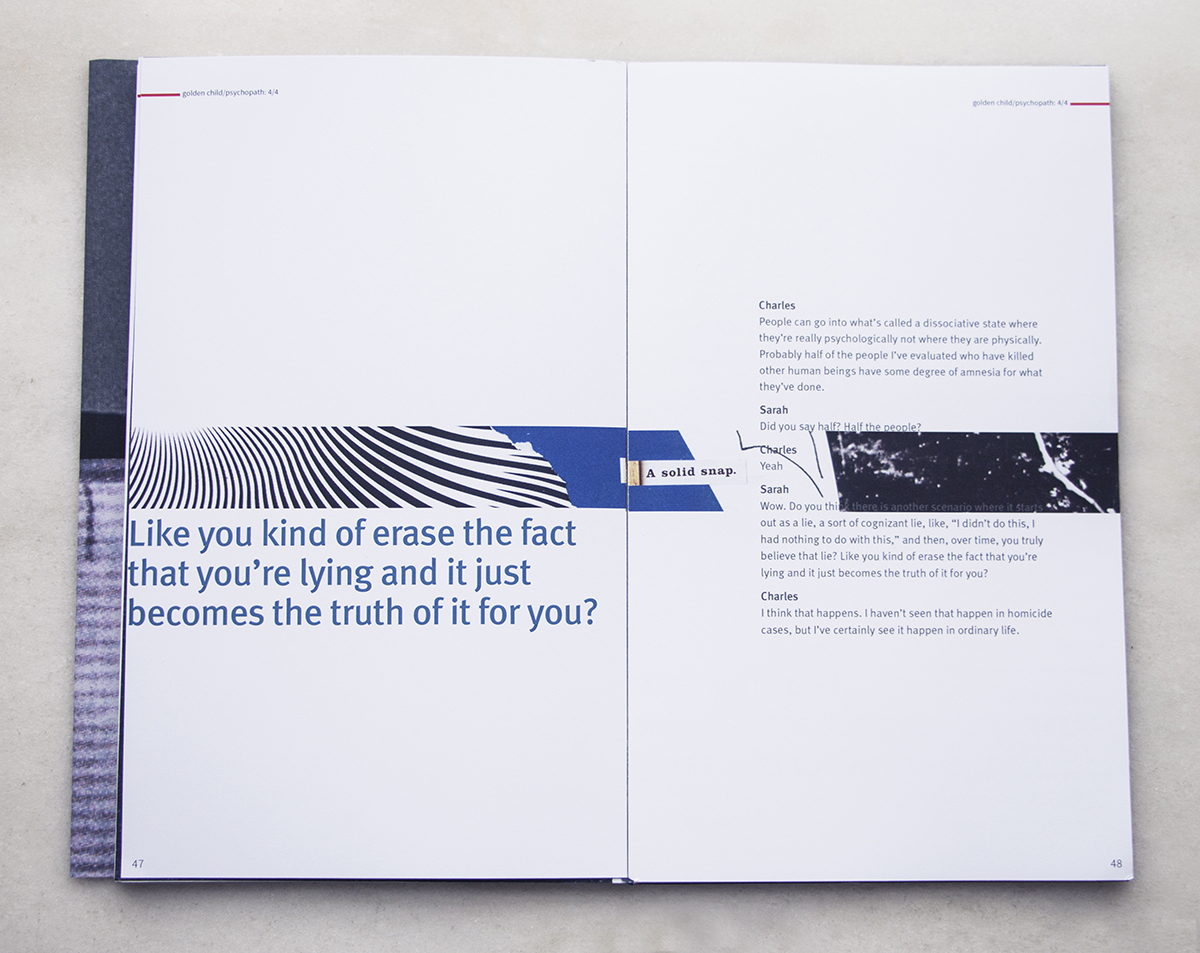
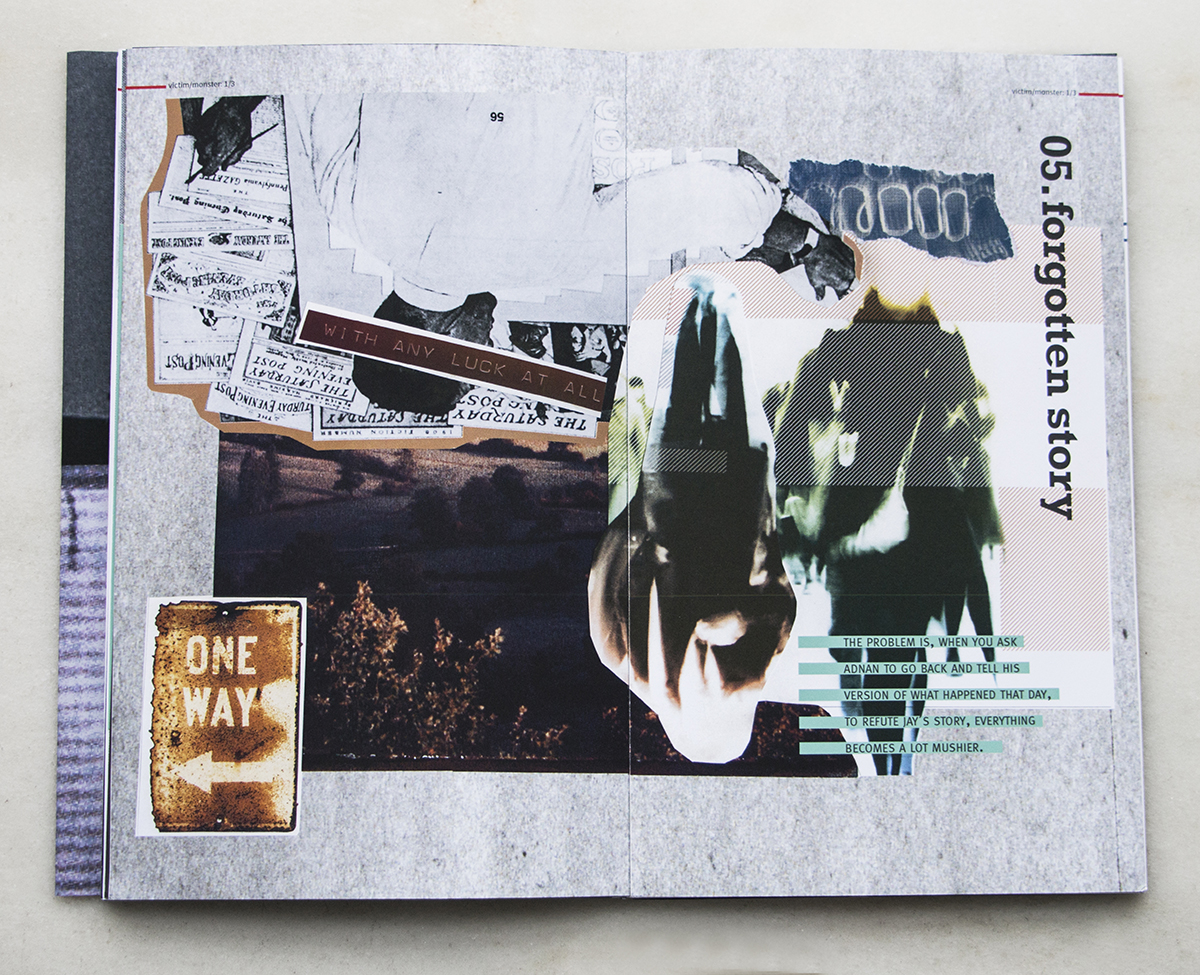
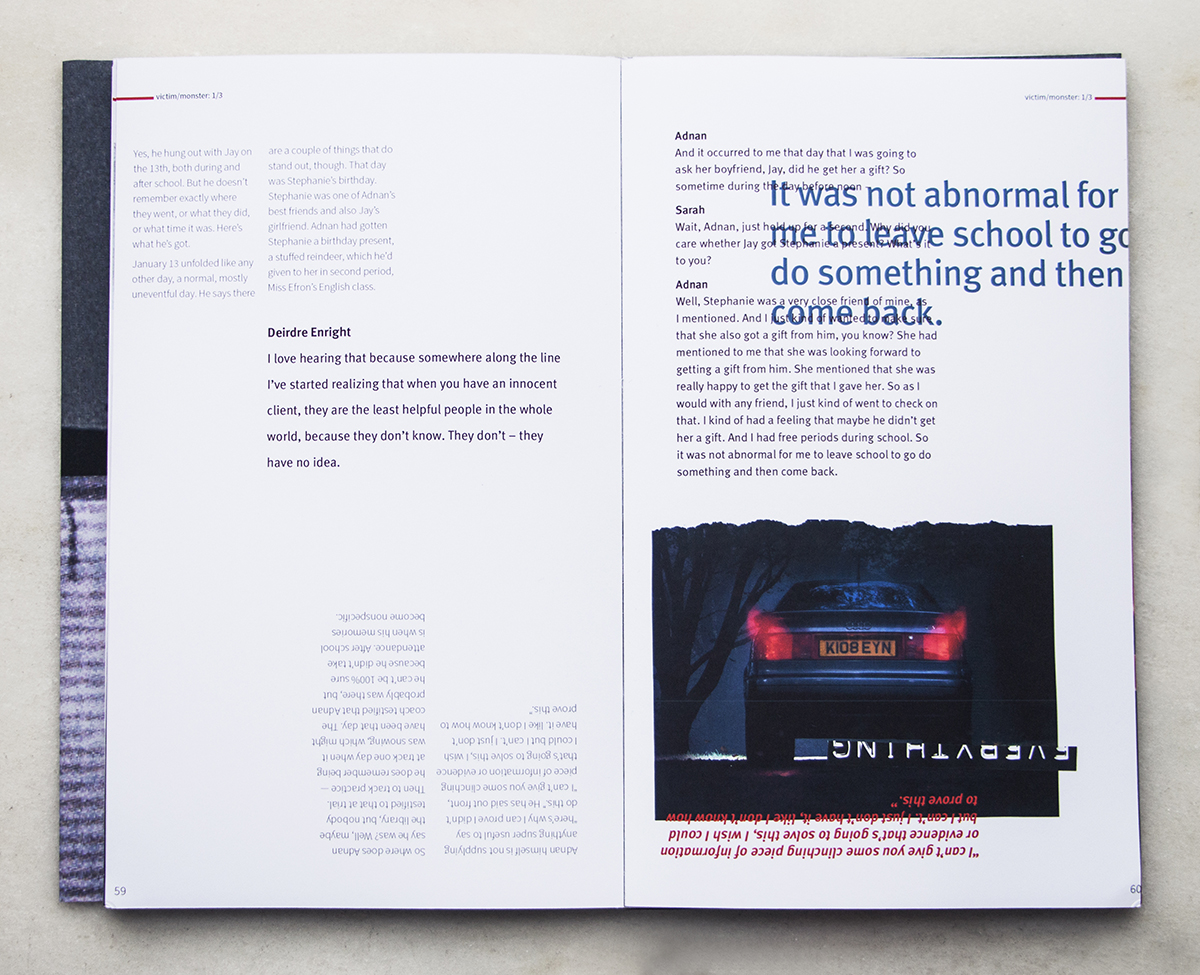
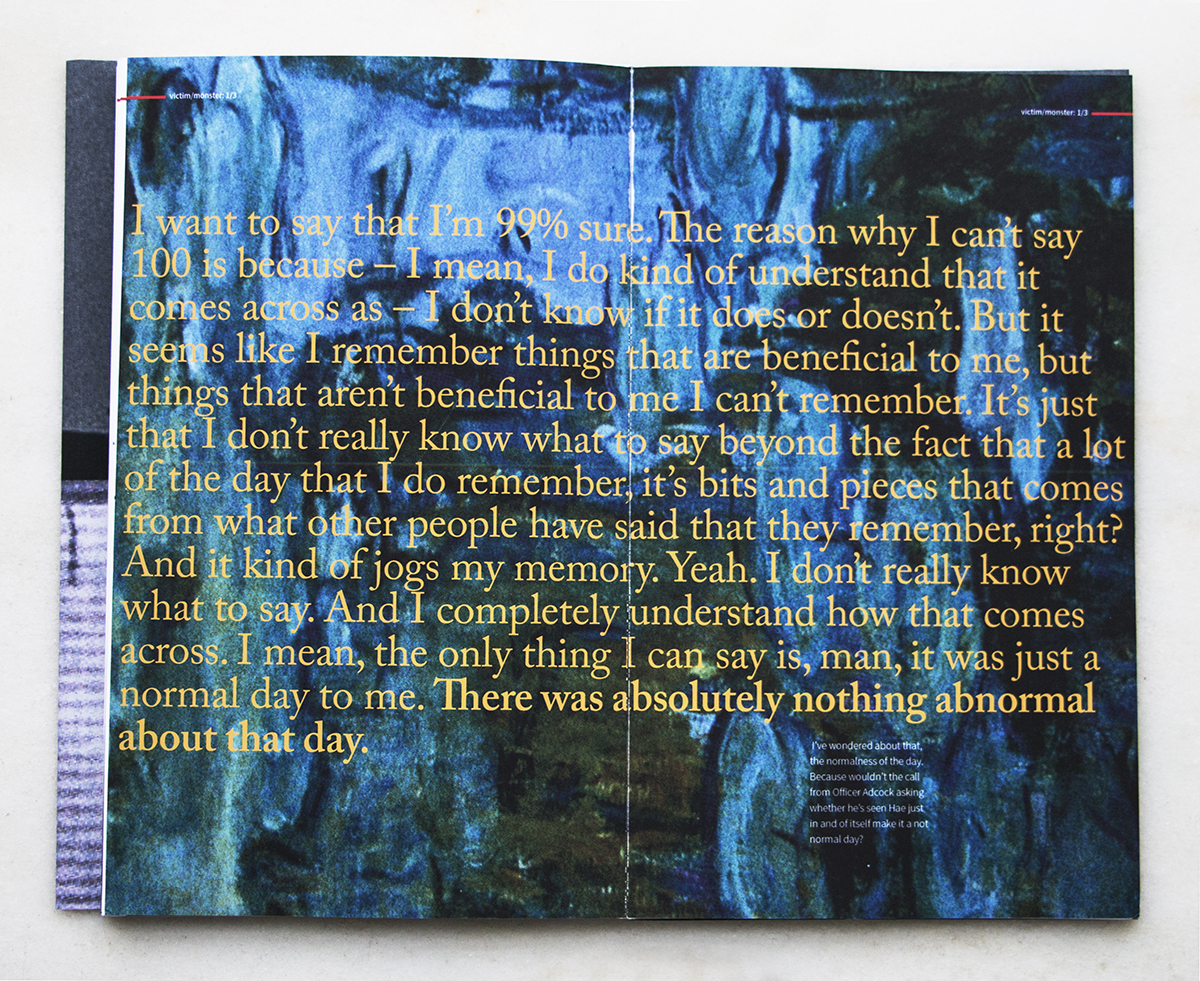
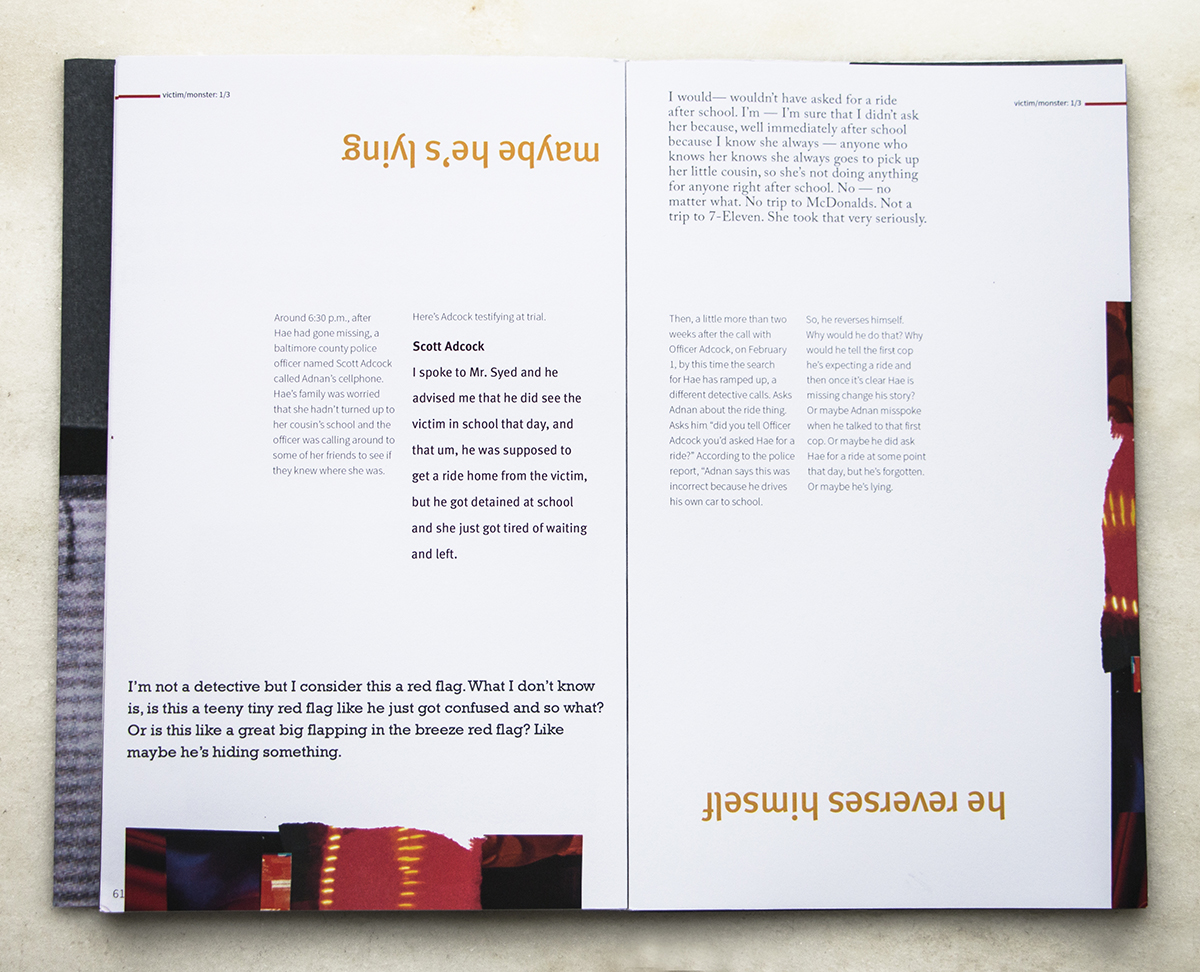
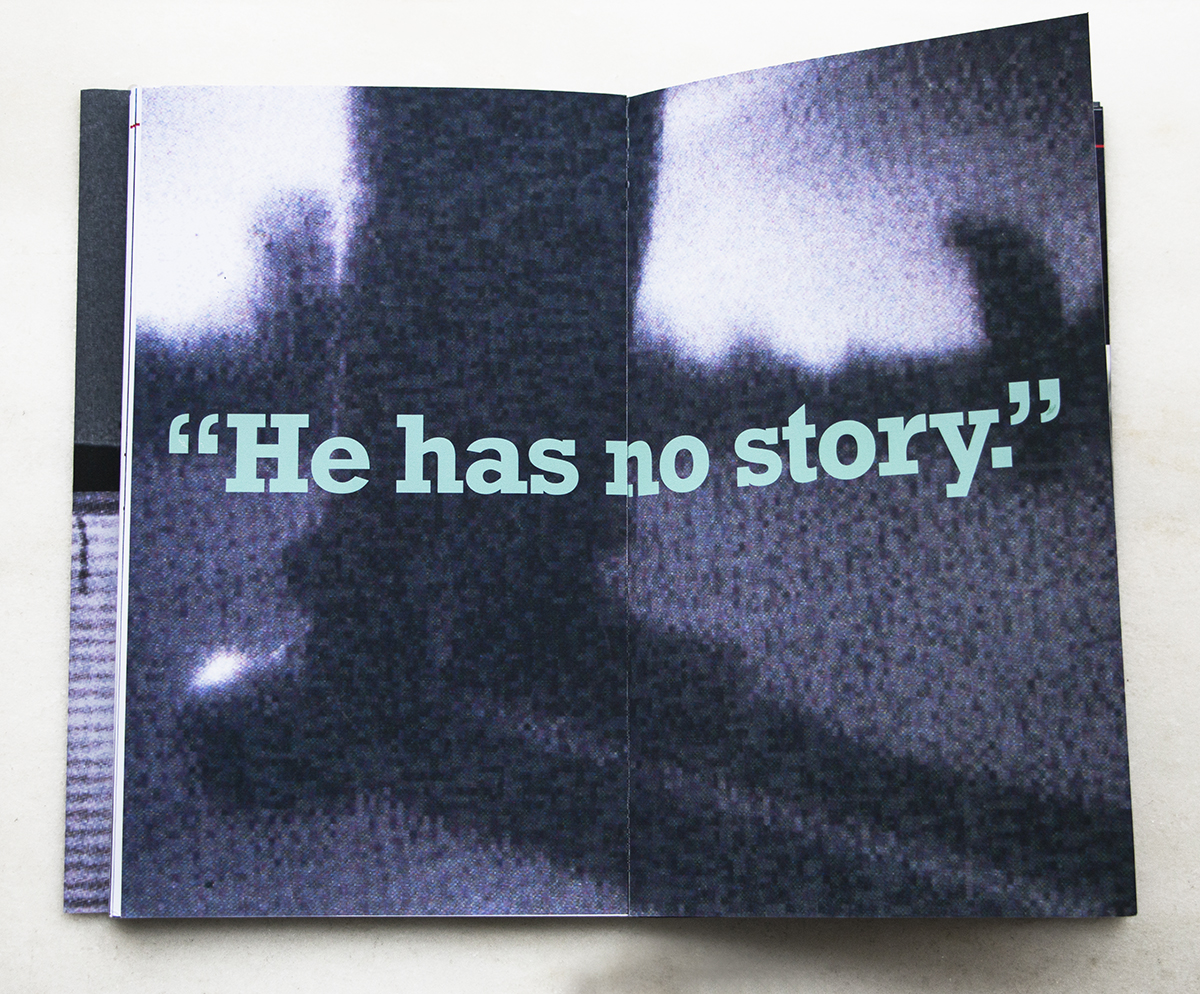

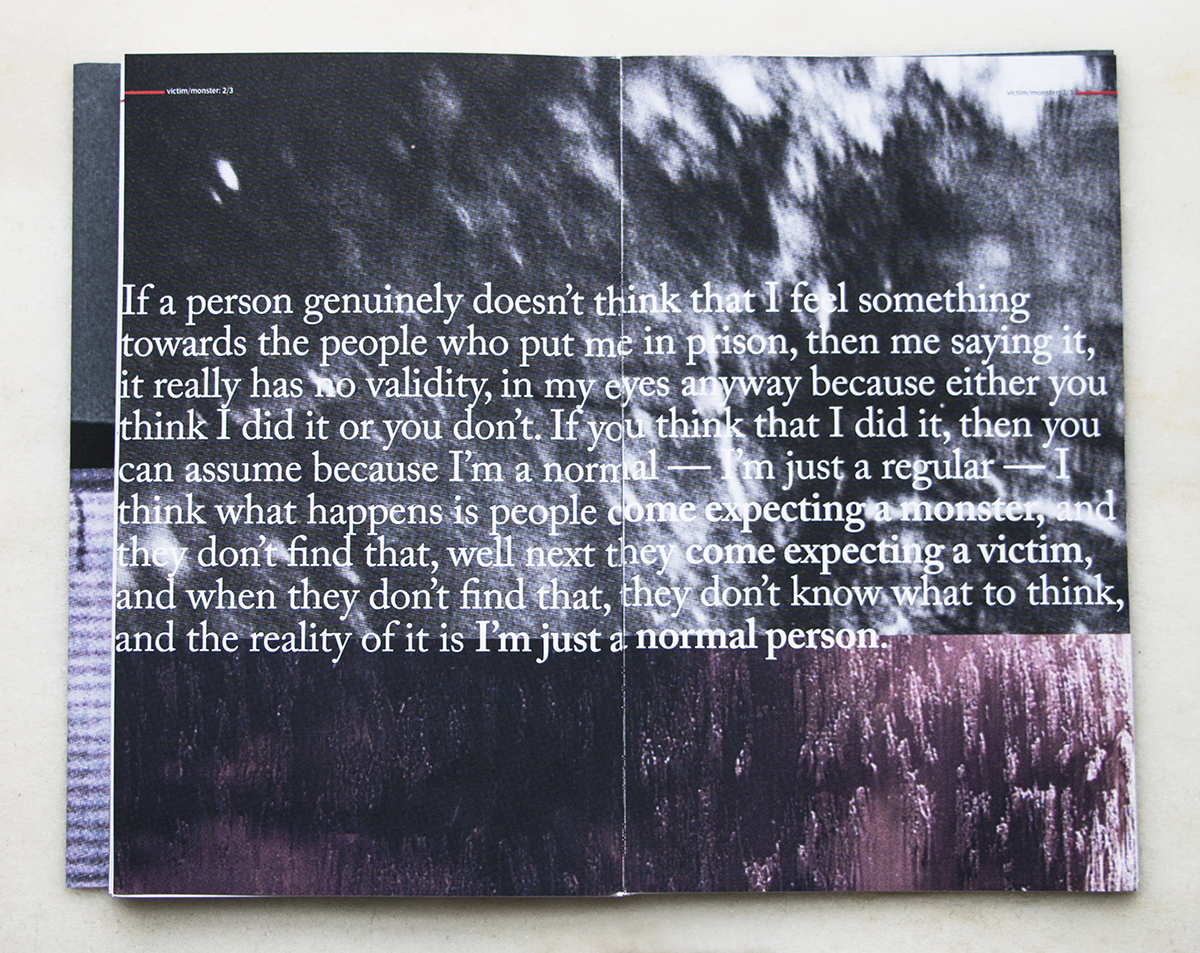
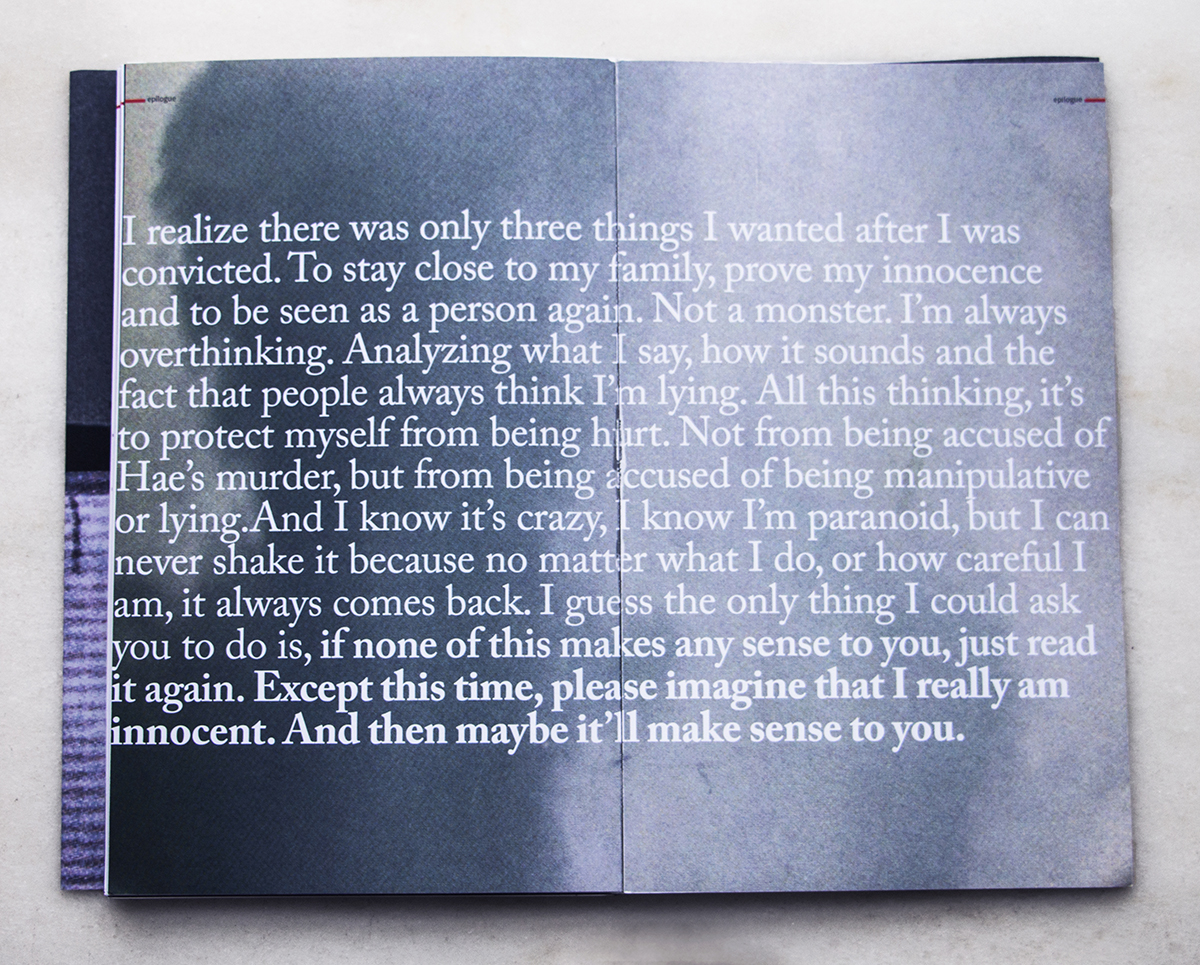
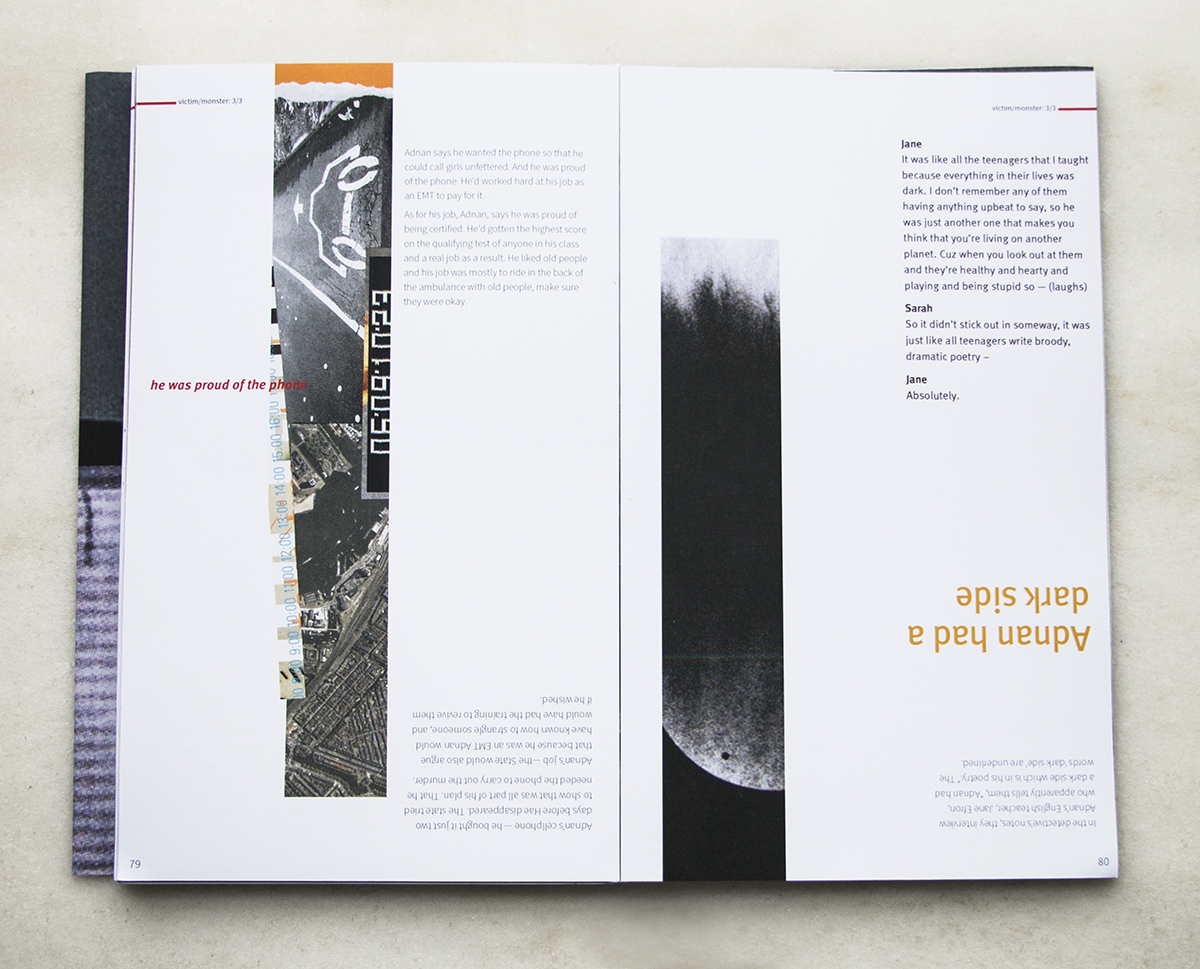
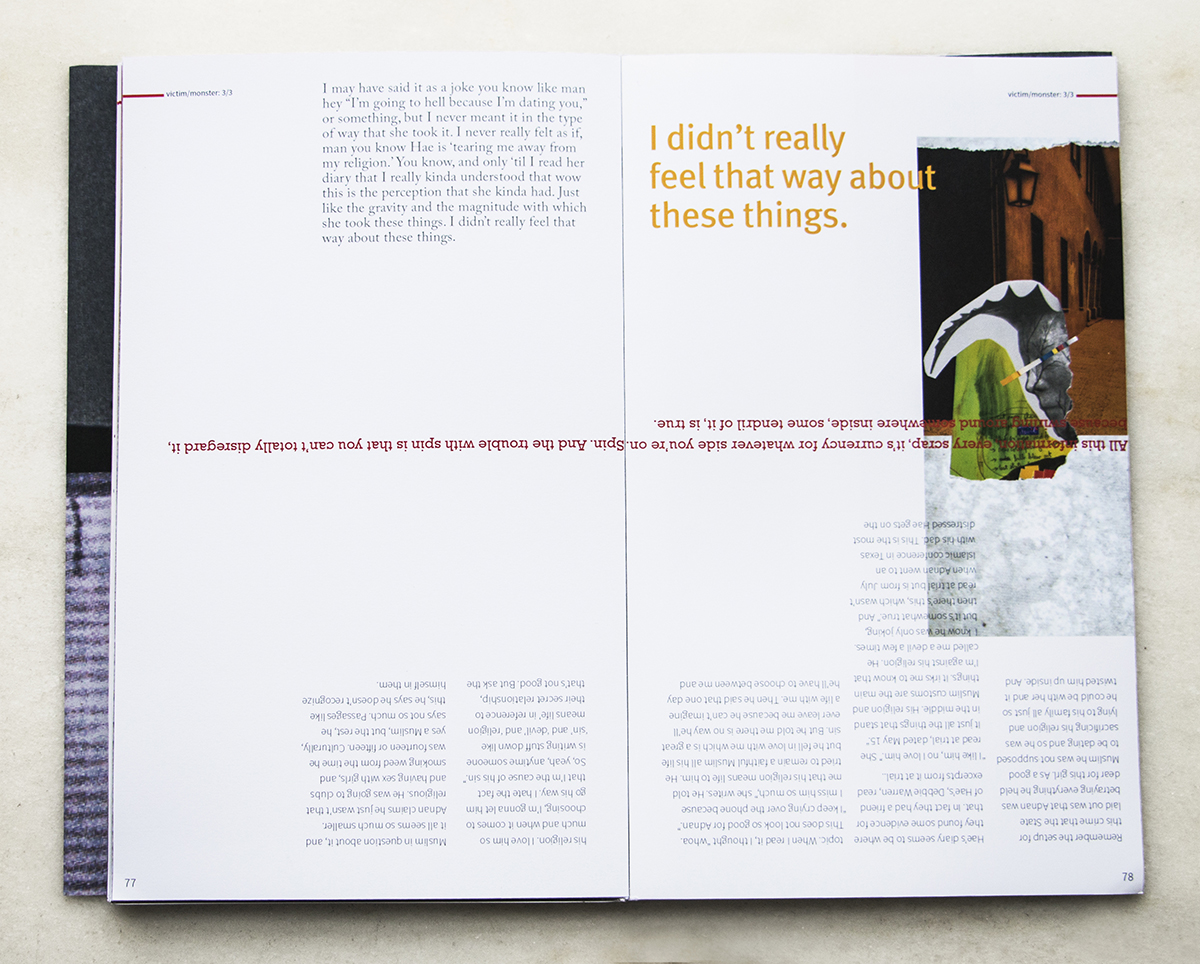
The 7 chapter opening spreads featuring the collages I made
Some example pages within the chapters
Story Analysis
Serial is made up of 12 episodes, and tells the story of Adnan Syed, who was convicted in 1999 for the murder of his ex-girlfriend. Although having been in prison for so many years, Adnan maintained his innocence. The podcast, narrated by Sarah Koenig, documents her investigation into the case in 2014, through restating evidences and interviews. Throughout the story, there are many inconsistencies, and the same incident or evidence was portrayed and recounted from many different standpoints. In one of the interviews with Adnan, he said something that struck a chord with me, namely his analogy of two different graphs showing the prices of tea from C-mart and 7-11. Their prices are exactly the same. It’s just that the graph of C-Mart prices is zoomed way in — the y-axis is in much smaller cost increments — so it looks like dramatic fluctuations are happening. And he made the pencil lines much darker and more striking in the C-Mart graph, so it looks more sinister.
"See how easy it is to look at the same information, but, depending on how it’s presented, come to two different conclusions about what it means? The 7-11 graph is the “innocent” graph. The C-Mart graph is the “guilty” graph. But they contain the same information. I thought about this a lot in relation to my own case, and I've always been baffled by it; how some people (the jurors) sat through the trial and heard one thing, and others (my family, lawyers, friends) sat through it and heard the opposite." — Adnan Syed
Concept
Based on this idea, my book unpacks all the different interviews and evidence laid out in the podcast, and divides the contrasting information on each same incident into two camps. For each chapter, the content that supports his innocence is set facing the right side, whereas the content that is for his conviction is set upside down. This way, readers have to physically turn the book upside down back and forth as they unravel the different incidents or statements surrounding Adnan Syed, and tangibly experience the dichotomy of viewing the same evidence in two opposite lights.
Information Architecture
The podcast comes with a huge amount of information, and in the process of extracting and organizing content for my interpretation, I created five different types of text to group content into: chapter openings, story narration, conversations, monologues by Adnan, and quotes from any stakeholder other than Adnan. For each chapter, which describes a singular event or a view related to Adnan, I organized content into any of these groups that supports either his innocence or conviction. I aim to create two sets of content that simultaneously display and interact, to emphasize the bias and inconsistencies of the case throughout the reading experience.
Visual style: collages, voices, flip flop
I used Source Sans Pro Light for all the narration voiced by Sarah Koenig, Adobe Caslon Pro for Adnan's monologues, Meta Pro for all conversations and quotes, and finally Rockwell for chapter headings and special call outs. I created a series of collages for each of the seven chapter openings, as well as for the corresponding content within chapters. I also incorporated found textures cut from magazines and from my collages.
Callout page highlighting the essence of the concept


